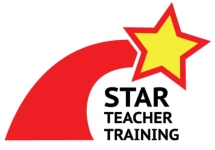I remember hearing that I’d have classes of 45 students and thinking “How in the world am I going to get that many kids speaking in a lesson?” Perhaps that sounds familiar to you, too. The good news is that there are actually many activities which work great in large classes. One of those is EFL chanting. Chants are a low-resource and highly adaptable activity that are great for young learners and nearly perfect for public primary classes.
What is EFL Chanting?
Chanting is just repeatedly saying strings of vocabulary, phrases or sentences in a singsong way.
They’re great for practicing vocab, pronunciation, chunks, and even building basic sentences. You can also include meaningful gestures for movement to get the whole class moving and speaking at the same time. Sounds pretty awesome, right?
Do kids really like chanting? Yes! It’s something that many new teachers are skeptical about – generally because they find it weird or awkward – but kids like it. The reason is because children like feeling in control and that they “can do it.” Chants are easy to figure out, predictable, and hit many of the same buttons that songs do. Once your students get the hang of a chant or two you’ll see them actually enjoy them. I know that I’ve had many classes do so.
Related Post: Understanding Silent Students in EFL Classes
EFL Chanting Examples – Vocab Chants
Chanting a string of words is a great technique to practice and review. Here are some examples with vocabulary from Family and Friends, a popular series in Vietnamese public primary schools.
farmer, firefighter, farmer, firefighter,
student and teacher, student and teacher
doctor and pilot, doctor and pilot
Police officer! Police officer!
-Adapted from Family & Friends Grade 2 Unit 4
pants and a dress, pants and a dress
a hat and a coat, a hat and a coat
shorts and a T-shirt, shorts and a T-shirt
socks and shoes, socks and shoes
or
pants and a dress, and a hat and a coat
shorts and a T-shirt, and socks and shoes
-Adapted from Family & Friends Grade 2 Unit 7
Creating your own: It helps the flow to balance out your syllables. One of the easiest ways to do that is by repeating the same phrase twice, such as “farmer, firefighter, farmer firefighter.”
Another way is pairing words together to equal the same number of syllables and even matching the stress. In the jobs example above each pair of words has five syllables. In the clothing example there are four stressed syllables (underlined) on each line. You can add articles, conjunctions, and other unstressed words to balance your chants and make them more natural.
Mime actions: You can add quick actions to a vocabulary chant as well to add movement and meaning. Sometimes this works better than others. In the jobs example above I can get students to do quick job mimes as they chant, but miming putting on the clothes takes a bit too long to be successful.
Related Post: Move Your Students with Kinesthetic Learning and TPR in ESL
EFL Chanting Examples – Question & Answer Chants
You can do a lot with common questions and answers that children learn early on. Chants make great practice and can lead into more freer speaking later on.
Here’s an example with school things from Family and Friends Grade 2 Unit 1 (pencil, pen, book, desk, bag door, window):
"What's this? What's this?"
"It's a (pen). It's a (pen)."
"What's that? What's that?"
"That's a (door). That's a (door)."
Gestures: I like to bend and pump my arms in a question gesture and then point to a flashcard or object near me as I ask “What’s this?” To expand on the language, I also move some flashcards away from me and around the room to add in “What’s that?”
This super simple 2x-2x pattern is easy to establish and follow. It also works well with a lot of other low-level questions and answers.
1. Who's this? Who's this? / It's (mom). It's (mom).
2. Whose is this? Whose is this? / It's dad's. It's dad's.
3. Where's the (ball)? Where's the (ball)? / It's in the (tree). It's in the (tree).
4. What time is it? What time is it? / It's (2) o'clock. It's (2) o'clock.
5. What day is it? What day is it? / Today is (Tuesday). Today is (Tuesday).
6. What do you like? What do you like? / I like (cake). I like (cake).
You can put flashcards on the board and/or around the room, then demonstrate it a few times and let the kids join in once they get the pattern.
The first round can be in a predictable pattern (clockwise, for example) and later rounds can be in a random order. Challenging students to go faster works great as well.
Lead Into Production: Once students have a good handle on the pattern they can also start to independently point and ask their classmates in small groups with Speed Speak. They can do this with chanting or without.
More EFL Chanting
There are other structures for chants that you can use with children. Carolyn Graham is famous for her Jazz Chants, and here is another version with Herbert Puchta.
What chants have you done in your lessons? Do you have any other ideas for effective EFL chanting? Don’t forget to like, comment, and share!
Check out our new course for Preschool on Udemy!







